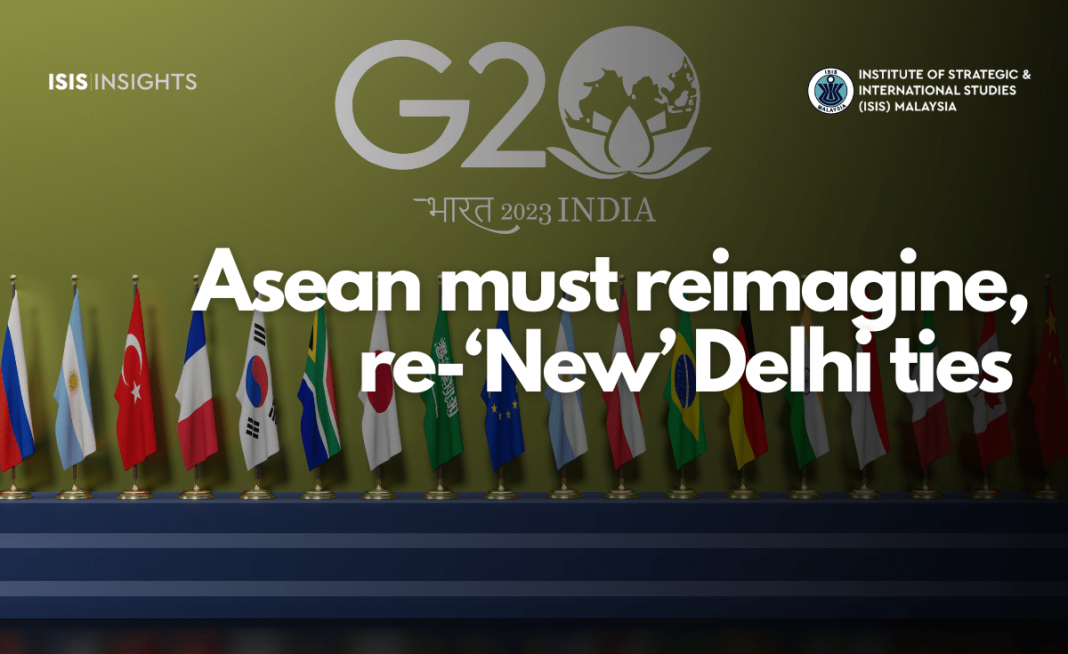As India expands global influence, Southeast Asia should leverage on its initiatives
India recently hosted the G20 summit, which was dubbed a phenomenal, runaway success and showcased its multi-faceted convening power.
But what was conspicuously absent was the lack of Southeast Asian representation in the guest list. The Asean chair was, of course, invited but because Indonesia was already a member of the grouping, an invitation could have been extended to either Lao PDR or even Malaysia as incoming Asean chairs, in addition to close Indian partner, Singapore, which was and is regularly invited to G20 summits.
More Asean invitees at the summit would have allowed the bloc to give cognisance to India’s dynamic role and growing significance in the region.
Some key outcomes of the G20 summit were the momentous inclusion of the African Union (AU) as a permanent member of the G20, launch of the Global Biofuel Alliance (GBA) and announcement of the India-Middle East-Europe Economic Corridor (IMEC) through the Partnership for Global Infrastructure and Investment launched last year.
AU becoming a permanent member of the G20 during India’s presidency and on its proposal in June can be seen as a culmination of New Delhi’s accelerated re-engagement with Africa in recent years.
In fact, initiatives like the India- and Japan-led Asia-Africa Growth Corridor, India-Africa Forum Summit and Africa Outreach can be seen as New Delhi’s vision of deeper functional ties with Africa.
GBA aims to serve as a catalytic platform, fostering global collaboration for the advancement and widespread adoption of biofuels. The alliance also aims to act as a central repository of biofuel-related knowledge and expert hub. Singapore has signed on as an observer country, which is an important development.
Power moves
The launch of the landmark IMEC is expected to stimulate economic development through enhanced connectivity and economic integration between Asia, the Arabian Gulf and Europe. It comprises of the east corridor connecting India to the Arabian Gulf and northern corridor connecting the Arabian Gulf to Europe.
Upon completion, IMEC will provide a cost-effective cross-border ship-to-rail transit network to supplement existing routes – enabling goods and services to transit to, from and between India, UAE, Saudi Arabia, Jordan, Israel and Europe.
These three takeaways from India’s G20 presidency and summit reveal New Delhi’s key priorities – amplifying the voice and visibility of the Global South; sustainable development through international cooperation and technological advancements; and connectivity on its own terms with the Middle East and Europe.
These feed into India’s broader aspirations of being a responsible and autonomous leading power – or “Vishwa Guru” as Prime Minister Narendra Modi calls it. While this does not come without challenges, New Delhi is proving to be rather adept at taking centre stage and punching above its weight in global affairs.
For Asean, the imminent rise of India will, understandably, not be the easiest thing to calibrate or adapt to – given how bilateral relations have been stuck in a self-imposed comfort zone for more than three decades.
This has not allowed either party to recognise change or alter perceptions of the partner and partnership. Relations are defined by older, outdated and “safer” narratives, so much so that they do not reflect current realities. A good example is Asean’s banal response to India’s Indo-Pacific Ocean’s Initiative.
Access to Africa
India’s G20 summit and its outcomes present an opportunity for Asean to address this – both structurally and functionally. It allows the bloc to understand its long-standing partner in the new decade and find imaginative ways to address challenges and work together, beyond the commitments made in each Asean-India summit.
Asean-Africa relations, for example, can be supported, advanced and brokered by India within existing frameworks and initiatives. It is noteworthy that Asean does not have robust political relations with African nations. Only five (Ethiopia, Ghana, Nigeria, Sudan and Zimbabwe) out of 54 African countries have ambassadors to Asean.
Despite the rhetoric of Asia-Africa solidarity, Asean and Africa still lack formal institutional and trade links. In 2021, although interregional trade increased, Africa remained a small part of Asean with only around 2% of its total market. This is a missed opportunity and India could be Asean’s solution to this.
GBA is also worth exploring, particularly because Asean is one of the leading suppliers of biofuel. In recent times, the feedstock crunch has posed a challenge to Asean’s biofuel production and net-zero aspirations.
Research and development on advanced biofuels are also at early stages in Asean. GBA’s aim to expedite the global uptake of biofuels through facilitating technology advancements could complement Asean’s efforts. As coordinator country for India until 2024 and as a GBA observer, Singapore is positioned strategically to establish a beneficial Asean-GBA connection.
Asean should also leverage on IMEC, seeing how connectivity remains a top priority. With similar ongoing connectivity projects like the India-Myanmar-Thailand trilateral highway which connects Asean and India by road, capitalising on an initiative like IMEC could elevate the partnership and be mutually beneficial.
The time is ripe for Asean to reimagine its relations with India. Asean-India cooperation must be contextualised and reflect each other’s abilities and approaches to the emerging regional order shaped by geopolitical developments.
A three-decade-old partnership does not have to stay “old”. Asean’s creative and cognisant engagement with “New” Delhi can and must change that.





